| Columns Retired Columns & Blogs |
Pawel/Ensemble PA-1 & Reference loudspeakers Measurements
Sidebar 2: Measurements
Footnote 1: I checked the Ensemble Reference's intrinsic distortion at three levels, 76dB, 86dB, and 96dB (all at 1m), and found that, indeed, distortion levels in the bass were quite high. Even at the lowest level, we are talking about between 1% and 3% THD between 50Hz and 100Hz, which is significantly higher than the distortion featured by the Celestion SL700 in this frequency region under the same conditions. This is the natural tradeoff of the designer's decision to use such a small-area woofer cone, I guess.—John Atkinson
The science of loudspeaker design is clearly dependent on measurements (footnote 1). Performance predictions of various loudspeaker models have to be verified experimentally. Once the validity of a particular model is established, it may be used to optimize a design to a given set of criteria. Most loudspeaker designs represent compromises in which a number of performance criteria have been juggled to achieve a hierarchy of priorities that appeals to the designer. The art of loudspeaker design lies in the ability of the designer to choose wisely. Which design considerations are most important perceptually? Which set of response glitches is less objectionable? Most dome tweeters feature breakup and ringing as part of their transfer function. Which tweeter represents a lesser evil? The answers to these questions have to be decided on the basis of listening tests. Measurements give us physical evidence, but do not offer us a clue as to their perceptual importance.
I happen to think that a system's impulse response is an excellent indicator of transducer sonic merit. The impulse response for a linear system (one where the output is linearly related to the input) completely describes the behavior of the system. The frequency response and group delay of the system may be calculated from the impulse response. Most of us are pretty used to interpreting frequency-response measurements. However, a complete frequency-domain description must include the group delay (the rate of change of phase delay with frequency). And it is not clear from the frequency domain just how a loudspeaker might perform on transient signals. As long as composers refuse to use pure sinewaves, the question of how a transducer reproduces a transient waveform will remain pertinent.
With a little practice it is possible to decipher the information afforded by an impulse response and gain an understanding of a loudspeaker's transient behavior. The profile of an ideal impulse response would be symmetric about the time axis. Full amplitude would be reached almost instantaneously. The decay back to the base line would also be essentially instantaneous, with no undershoots or ringing.
Real-life impulse responses are not that pretty. First of all, the rise time is not instantaneous, and the main peak of the impulse is spread out in time. The worse the group delay of the loudspeaker, the more dispersed in time the impulse response becomes. Eventually, the impulse response can actually break up into two or more distinct peaks. This is bad. What you want is a quick delivery of the energy dumped into the loudspeaker. A tight impulse response is synonymous with a cohesive or tightly focused soundstage presentation. The sonic equivalent of a dispersed impulse response may be a sonic aftertaste, such as sizzle, or a blurred and indistinct presentation: transients go on ringing and run into each other, obscuring information. Typically, a speaker's impulse response undershoots the base line or time axis, then oscillates or rings for a while.
The more resonant the tweeter, the more ringing you'll see in the impulse response. The really good tweeters feature a slight undershoot that is quickly damped out. Tweeters that spit and sizzle at you can be seen to undergo large-amplitude ringing for quite a few milliseconds.
A large treble peak in the frequency response of a speaker can cause an oscillatory buildup of the impulse response. If the treble peak is moderate, there may only be a few wiggles in the leading edge of the impulse response.
Figs.1 and 2 show the impulse responses of the Ensemble PA-1 and Reference, respectively, as measured with DRA Labs' MLSSA system on the listening axis at a distance of around 48". Let me put it to you this way: JA, who was in charge of these measurements, exclaimed that he had not seen such impressive-looking responses in years (footnote 1). This is about as close to textbook-perfect as a loudspeaker gets. The main peak of the impulse response rises very quickly and is tightly defined. The ringing on the leading edge is minimal and very well damped. The negative-going wiggle on the leading edge of the impulse is very likely caused by a treble peak. (Figs.3 and 4 show the respectivce step responses of the two loudspeakers, produced by double-integrating the impulse responses. These reveal that the PA-1 and Reference have their tweeters connected in inverted acoustic polarity, the woofers in posirive polarity, but with good time-domain integration of their outputs.—Ed.)
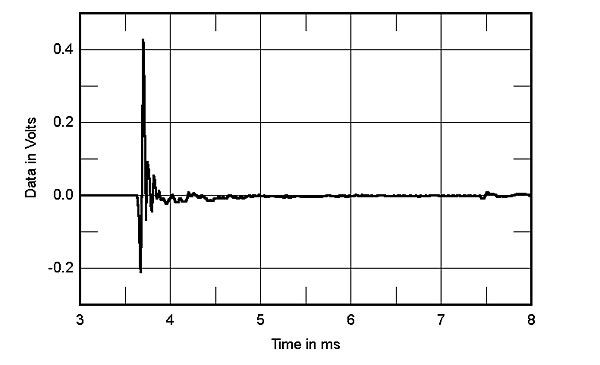
Fig.1 Pawel PA1, impulse response on tweeter axis at 48" (5ms time window, 30kHz bandwidth).
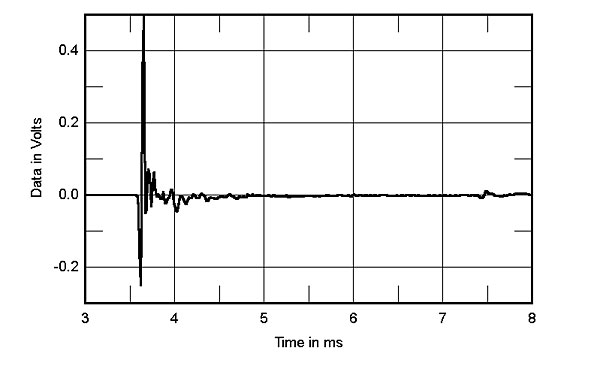
Fig.2 Pawel Reference, impulse response on tweeter axis at 48" (5ms time window, 30kHz bandwidth).
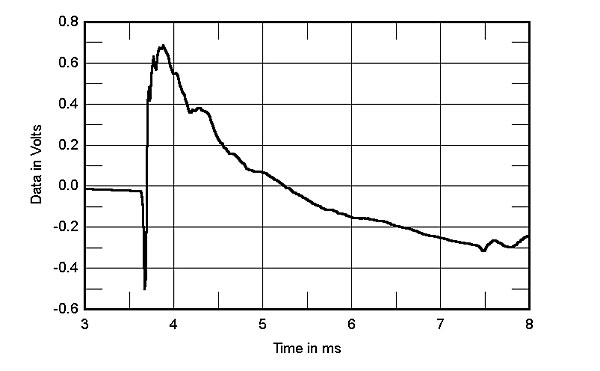
Fig.3 Pawel PA1, step response on tweeter axis at 48" (5ms time window, 30kHz bandwidth).
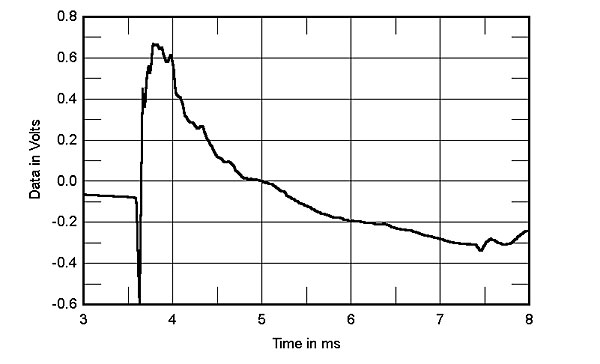
Fig.4 Pawel Reference, step response on tweeter axis at 48" (5ms time window, 30kHz bandwidth).
And indeed, MLSSA's FFT calculation of the PA-1's frequency response (fig.5) shows a treble peak centered at about 14kHz. This figure is actually an average of several measurements taken across a 30° lateral window centered on the PA-1's listening axis. The righthand side of fig.6 shows the response of the Reference taken under the same conditions, which appears essentially similar to that of the PA-1. My own measurements also turned up essentially no differences in the in-room frequency response.

Fig.5 Pawel PA1, anechoic response on tweeter axis at 50", averaged across 30° horizontal window and corrected for microphone response.

Fig.6 Pawel Reference, anechoic response on tweeter axis at 50", averaged across 30° horizontal window and corrected for microphone response, with the nearfield responses of the port and woofer plotted below 200Hz.
The first waterfall plot (fig.7) shows the PA-1's amplitude response as a function of frequency and time. The midband can be seen to be exceptionally smooth, without any resonant breakup. The lower treble is also well-behaved, with almost all of the energy here delivered within a millisecond. Although there appear to be a couple of resonances in the extreme treble around 20kHz, at least the lower of these is actually due to the MLSSA hardware picking up the computer's TV monitor line whistle and should therefore be ignored. The second waterfall plot (fig.8) shows the manner in which the Reference's response changes as the impulse decays. If anything, the PA-1's plot is a tad better, but I should hasten to add that the Reference was not as well broken in as the PA-1 at the time (footnote 3).
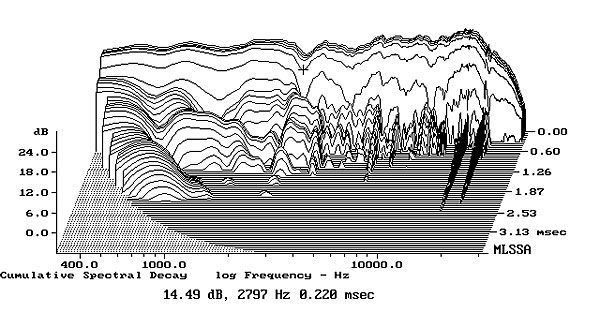
Fig.7 Pawel PA1, cumulative spectral-decay plot at 50" (0.15ms risetime).
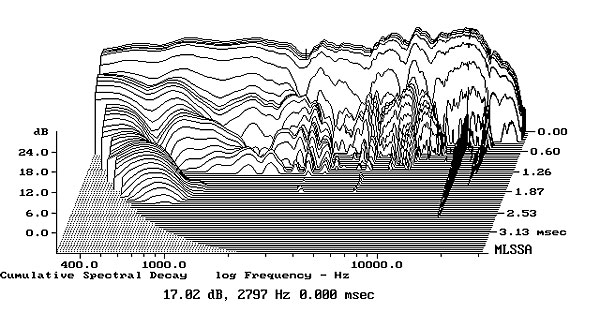
Fig.8 Pawel Reference, cumulative spectral-decay plot at 50" (0.15ms risetime).
Because of the limited resolution of MLSSA in the lower octaves, I supplemented these measurements with in-room measurements using my own Neutrik System. At 4' and centered on the tweeter axis, the in-room response was within 3dB from 200Hz–10kHz. The only blemish was a 4dB peak centered at 15kHz. Below 200Hz, the inevitable room modes roughened up the response. (For comparison purposes with other speaker reviews published in Stereophile, fig.9 shows the spatially averaged response of the pair of References measured by JA in his listening room some 4' out into the room and well away from the sidewalls.) The Ensemble's bass response, like all speakers', is dependent on placement in the room. Positioned about a third of the way into the room from the front wall for best imaging performance, the half-power bass frequency was 54Hz. Measured nearfield, the Ensemble Reference woofer's –3dB point was 70Hz, as can be seen from the lefthand plot in fig.4.
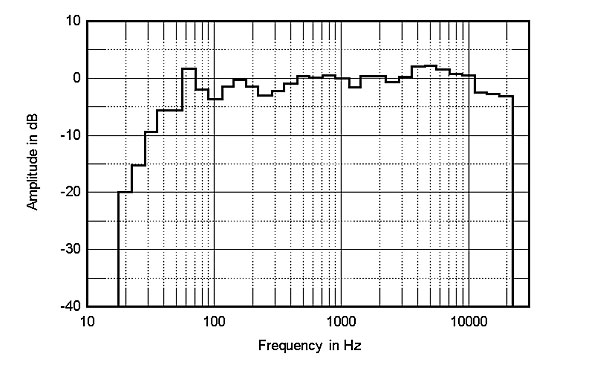
Fig.9 Pawel Reference, spatially averaged, 1/3-octave response in JA's Santa Fe listening room.
Harry Pawel actually recommends a speaker placement of 0.1–1m from the wall in order to maximize the deep-bass response. Although I did not measure the bass response with the speakers that close to the wall, I would not be surprised if the bass here were extended into the 40s. Instead, I opted for a position that maximized the Ensemble's remarkable spatial-resolution capability—and that turned out to be away from the wall and with considerable toe-in so that the tweeter axes crossed over just in front of the listening seat.
One of the critical design decisions involved the tuning of the passive radiator for the best possible balance between bass extension, speed, and power handling. A nearfield measurement of the passive radiator output showed a bandpass response centered on 54Hz (again see the lefthand plot of fig.6). At sea level, rather than Santa Fe's 7000' altitude, I would expect the resonant frequency to drop by a couple of Hz. Nevertheless, this rather highish tuning sacrifices deep-bass extension and causes the woofer to unload below about 30Hz. Thus, you would expect the Ensemble to be very susceptible to subsonic frequency overload. However, the plus side of this tuning is that power handling in the midbass is greatly improved and the balance in the midbass and upper bass regions in relation to the lower mids is much flatter than is typical of the average minimonitor. I feel that this is a very intelligent choice for a minimonitor. There is no point pushing the bandwidth of a little speaker into the deep bass. The decision to make the passive radiator assist in the midbass is one that should be emulated by more designers.
Figs.10 and 11 show the electrical impedance magnitudes (solid lines) and phases (dotted lines) of the PA-1 and Reference respectively. No surprises here, but note that both speakers drop to 4 ohms in the upper bass. Wimpy amplifiers are best avoided. Finally, fig.12 shows the rolloff provided by Pawel Acoustic's subsonic filter. Flat down to 30Hz, there is 6dB of rejection at 20Hz and 16dB at 12Hz, which will usefully reduce cone motion.—Dick Olsher

Fig.10 Pawel PA1, electrical impedance (solid) and phase (dashed). (2 ohms/vertical div.)

Fig.11 Pawel Reference, electrical impedance (solid) and phase (dashed). (2 ohms/vertical div.)
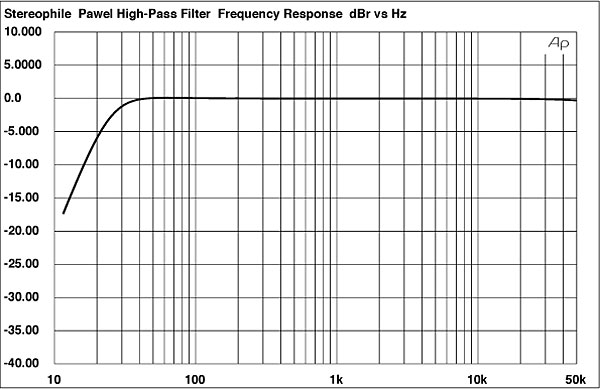
Fig.12 Pawel High-Pass Filter, frequency response.
Footnote 1: I checked the Ensemble Reference's intrinsic distortion at three levels, 76dB, 86dB, and 96dB (all at 1m), and found that, indeed, distortion levels in the bass were quite high. Even at the lowest level, we are talking about between 1% and 3% THD between 50Hz and 100Hz, which is significantly higher than the distortion featured by the Celestion SL700 in this frequency region under the same conditions. This is the natural tradeoff of the designer's decision to use such a small-area woofer cone, I guess.—John Atkinson
Footnote 2: This was before I looked at the Thiel CS5 reviewed by LA elsewhere in this issue. And to be honest, the Spica TC-50 that I reviewed last October and the Quad ESL-63 also feature excellent, time-coherent impulse shapes.—John Atkinson
Footnote 3: I have also found that the relative humidity affects the way in which a speaker's behavior is reflected in these waterfall plots, presumably due to the surround and diaphragm materials acting differently when loaded with differing amounts of water.—John Atkinson
- Log in or register to post comments




































